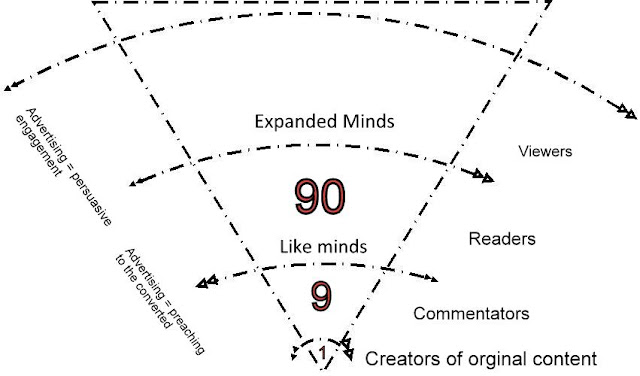Fig.1. Why blog?
A) What is the research trying to find out; what questions is it trying to answer?
B) How will the proposed research answer the questions?
C) Why is this research worth doing? Punch (2006:05/60)
My interest and participation in blogging is obvious. I am exploring other subjects to research, but inevitably come back to this. There are fields where blogging works, and others where it does not.
Do you think that students who keep a blog learn more?
Retain more? And so get more from their undergraduate studies?
Are certain subjects more appropriate for this where writing and digital literacies are being developed?
Such as:
- journalism,
- corporate communications,
- advertising (social media and copywriting)
- creative writing and even postgraduate research?
Blogs also mean generating, collecting and curating images and video
What role do these play in personal and professional writing?What if it is made compulsary, a graded component of all or part of a module you are taking?
What about those in the visual arts such as designers and art directors, who create concept boards for development purposes, or for architects and fashion designers, as well as in the performing arts such as actors and directors?
Might those following vocational subjects such as medicine or law set in train a way to enhance a life of learning?
Could blogs be peer graded successfully?
What benefits do you get from reading or contributing to another persons blog?
Is it less a blog and more of a publication when others contribute and the 'blog' carries advertising and is available to read only through subscription?
What do we learn by thinking of the origins of blogging as keeping a diary, log or journal, such as the private diary, journey log in a yacht, or writers journal?
Is it just electronic paper?
'Tell the reader what QQ the researcher is trying to answer, or what questions will initiate the inquiry in an unfolding study.' Punch (2006: 65)
Another way to gather your thoughts and ideas?
When is a blog an e- portfolio? What does it reveal about the person if the blog is shared?
Are like-minds attracted to each other?
What are the copyright and other legal issues?
How honest or revealing should one be? Are the concerns about exposure and disclosure valid?
It's not what you remember about yourself that is of concern, but what you remember about other people. What they did, who they were with ...
When does truth turn into fiction and does it matter if the reader cannot tell and isn't told?
What about plagiarism?
What is the perspective behind the research?
What is the role of theory?
What is the prestructured versus unfolding research?
What is the relevant literature?
Will the study be quantitative, qualitative or both? Punch (2006:60)
'The proposal should indicate the significance of the proposed study. Synonyms for 'significance' here might be justification, importance, contribution or intended outcomes of the study.' Punch (2006: 68)
REFERENCE
